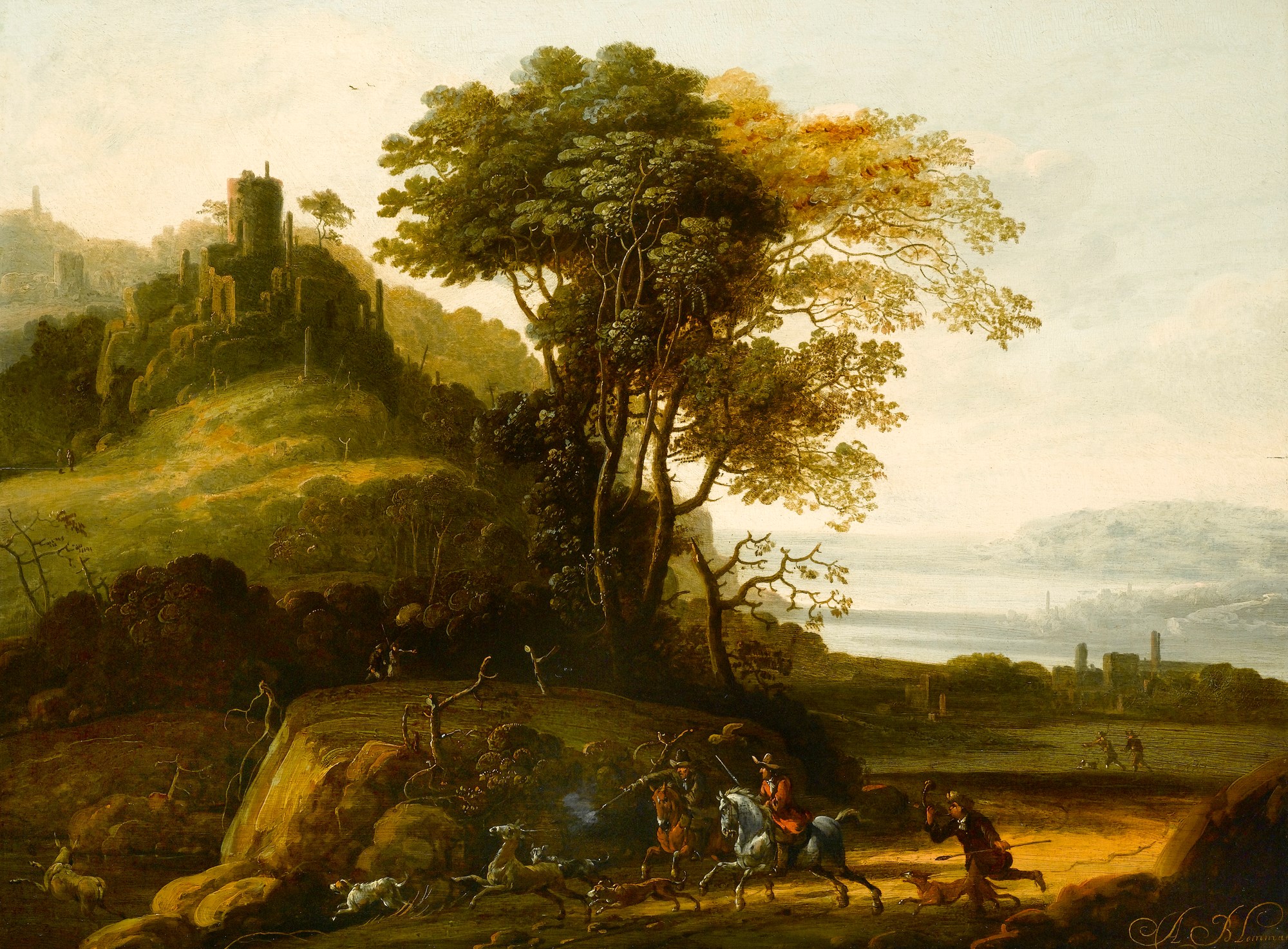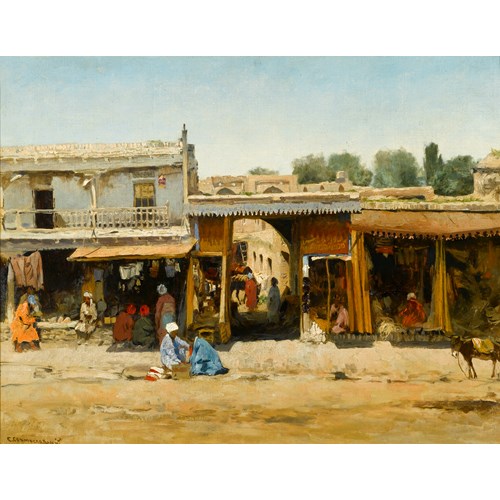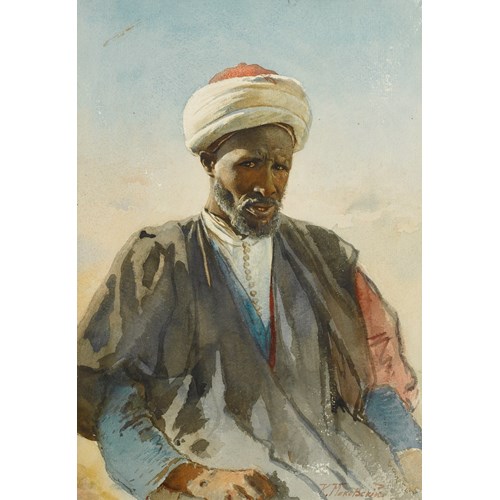Abraham Blommaert
Elegant Hunting Company
Epoque 1600-1750, 17th century
Origine The Netherlands
Medium Oil on panel
Dimension 49.5 x 67 cm (19¹/₂ x 26³/₈ inches)
The landscape is composed in two clearly distinct parts. From the river in the bottom-left hand corner a hill rises sharply, culminating in an abandoned medieval castle and beyond this, the mountain range continues. The steep rise is accentuated by the lofty tree which towers over the scene and this, along with the other foliage, is especially finely depicted by Blommaert. In comparison the terrain of the right-hand side of the painting is extremely flat and a valley stretches away to the background where a town sits on the edge of a vast lake. The landscape is bathed in a warm golden light and the palette of cool greens, yellows and blues unifies the sprawling scene.
Elegant Hunting Company is a typical example of Blommaert’s work and shares many of the features of the Hermitage’s Rocky Landscape with a Dry Tree. Again a castle sits atop a hill, framing the composition, a motif that recurs throughout Blommaert’s work. Although not as animated as in the present work, the Hermitage’s painting also contains the fine, almost calligraphic, rendering of the foliage that is such a distinctive aspect of Elegant Hunting Company. Blommaert’s landscapes also invariably feature dramatic undulations and this is evident in both the present work and the Hermitage work.
It has only come to light relatively recently that Blommaert was an independent landscape artist, and before the identification of many of his paintings in 1996, his work had often been attributed to Adriaen Bloemaert (c.1609-1666). Blommaert was born in 1626 in Middelburg, the capital of Zeeland. Like many of his colleagues, Blommaert pursued a second activity besides his profession as a painter, especially since the economic situation of many artists had deteriorated due to the outbreak of the war between England and the Netherlands in 1652. This economic struggle is evidenced by the fact that in 1675 he was summoned before the town treasurer of Middleburg to explain why he had not been paying property tax. Blommaert worked as a teacher, which accounts for the careful handwriting which also characterises his signature. This meticulousness is also revealed in his painting, particularly in the rendering of foliage and figural staffage in his landscapes. They provide evidence of the artist’s individual style, which is independent of any specific models, although the predominately Italianate landscapes reveal the influence of Flemish precursors.
Epoque: 1600-1750, 17th century
Origine: The Netherlands
Medium: Oil on panel
Signature: Signed ‘A. Blommaert’ (lower right).
Dimension: 49.5 x 67 cm (19¹/₂ x 26³/₈ inches)
Provenance: Collection of Joachim le Breton;
his daughter Mme Jules Cloquet;
her daughter Mme Henri Levesque;
her daughter Mme Paul Morin;
her son, member of the d’Arcet family.
Literature: Marten Jan Bok and Marcel Roethlisberger, ‘Not Adriaen Bloemaert but Abraham Blommaert (of Middelburg), Landscape Painter’ in Oud Holland (vol. 110, 1996, pp. 12-34), no. 38.
Plus d'œuvres d'art de la Galerie









